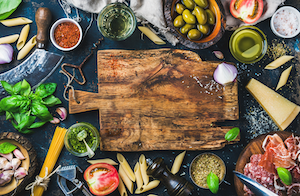Swiss Chard
From Lynne Wilson
Also known by the common names Swiss Chard, Silverbeet, Perpetual Spinach, Crab Beet, Seakale Beet and Mangold, is a vegetable and a Beta vulgaris subsp. maritima. While the leaves are eaten, it is in the same species as the garden beet (beetroot), which is grown primarily for its edible roots. The word Swiss was used to distinguish chard from French spinach varieties by nineteenth century seed catalog publishers. The chard is very popular among Mediterranean cooks. The first varieties have been traced back to Sicily. Chard can be harvested while the leaves are young and tender or after maturity when they are larger and have slightly tougher stems. Chard is extremely perishable. Chard has shiny green ribbed leaves, with stems that range from white to yellow and red depending on the cultivar. It has a slightly bitter taste. Fresh young chard can be used raw in salads. Mature chard leaves and stalks are typically cooked or sauteed; the bitter flavor fades with cooking. Cultivars of chard include green forms, such as 'Lucullus' and 'Fordhook Giant', as well as red-ribbed forms such as 'Ruby Chard', 'Rainbow Chard', and 'Rhubarb Chard'. Chard and the other beets are chenopods, a group which is either its own family Chenopodiaceae or a subfamily within the Amaranthaceae. Chard is used in a variety of cultures around the world.

Ingredients
Swiss Chard: Any amount desired.
Method
After washing Swiss Chard, slice the stalks across in ½ inch slices and add them to the leaves to cook. The combined sliced stalks and leaves cook in about 5 minutes in boiling water. When you cut the stalks into larger pieces, the greens are done long before the stalks. We occasionally sell small Swiss Chard (thinnings, like beet greens). These take only 3 to 4 minutes to cook.
